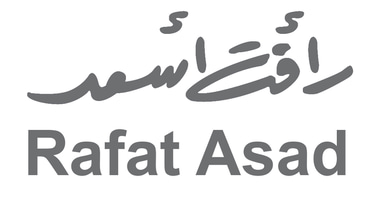Residential Block, 2024
Gray Sea
During this exhibition, Asad attempts to answer the question of the feasibility of action as a continuous endeavour and what this looks like, a question that war brings to the surface. He does so at a time when our actions as Faraway People have been restricted to closely observing death, counting its victims, and listening to the cries of the bereaved on a cold and dark night.
The artist also addresses the issue of temporary architecture and reconstruction and questions how the occupation transforms cement from a material that builds and protects to one that kills. He also reviews the forms of Gaza’s isolation from the world through paintings and poetic texts born from the womb of the tragedy.

(Weight of a grain of mustard) «مثقال حبة من خردل» x 2020
Installation, 150 x 50 X 4 cm، Fibreglass and lighting, Weed Control Exhibition, A.M. Qattan Foundation. Ramallah.
Wild and medicinal herbs were always a major aspect of Palestinian life. Mustard plants are part of the local vegetation and mainly used in traditional medicine prescribed regionally and worldwide.
Mustard plants are mentioned in many religious, folk and mythical texts, carrying diverse meaning. Its seed is very small and light— around 1–2 mm—but does not indicate the substantial benefits of the plant once it grows. Therefore, this seed symbolises the relatively small sizes, but large benefits, behind many religious and folk tales.
Due to mustard’s constant presence in religious stories and folklore, it enhances Palestinian life. Under colonial British occupation, these seeds and herbs were considered poisonous and to be disposed of. This practice sought to obliterate the local identity and the surrounding environment. This was done in addition to replacing the local wildlife, herbs and vegetation with other types of plants.
This artwork is a lighted sign with the phrase Weight of a grain of mustard. This piece serves to highlight the importance and effectiveness of the seeds: in spite of human efforts to destroy it, it is always able to grow again.

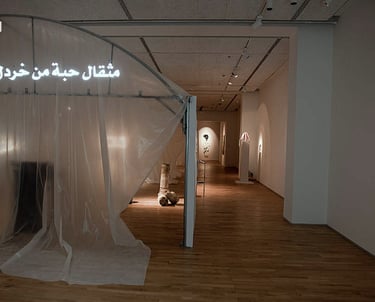

(Landing) «هبوط». c2017
Sound, photograph, painting
The Dream of Atta and Khamis is in no way similar to that of Ibn Firnas related to flying. Their airplane stopped flying since a very long time. Moreover, Atta and Khamis were unable to transform the airplane to a restaurant for several reasons, mostly because of the outbreak of the second Intifada and the closure of the road leading to the area where the airplane is located.
The image of the airplane in the valley always reminds us of flying. It reveals our need as Palestinians to flying experiences starting from Lod Airport to Jerusalem and Qalandia Airport then to Gaza International Airport.
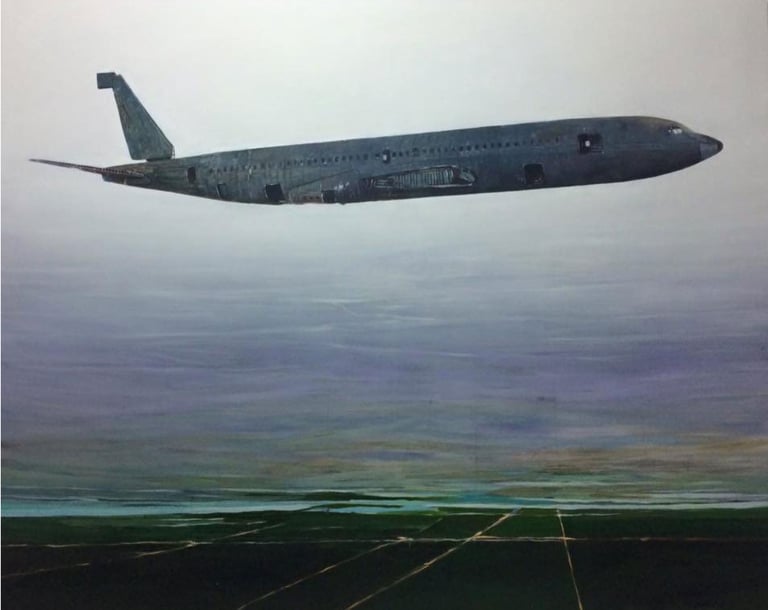


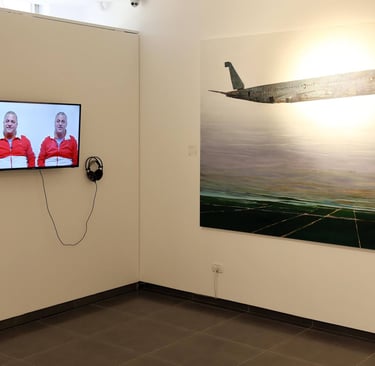

Landing, Acrylic on Canvas - 200 X 160 cm, 2006
Iraq Burin 1997 - 2017, 2017
In 1997, in company of my classmates at the Faculty of Fine Arts at Al-Najah University, I visited the areas of Till and Burin. From that beautiful valley, each one of us painted what he saw in the area. On that day, I painted the village of Iraq Burin, a small village which lies on top of a high rocky cliff. Houses seemed to be part of that cliff and part of the rocks.
At the time, I was still a student at the Faculty of Fine Arts, the nature and landscape were subjects that I would study and learn about. Ever since, I have discovered my relationship with nature and the surrounding environment. These themes have emerged in my works. At first, the Narrative Exhibition reflected my personal narrative and experience with nature and my surrounding environment since I was a little child. Then, the Maps Exhibition portrayed my relationship with completely new surroundings. It showed the urban milieu and the great cities I saw when I spent three months in London. That was my first visit outside of Palestine.
Later, the Marj Ibn Amer Exhibition presented an imaginative, reflective vision of the Marj Ibn Amer area, an enormous quantity of green and an exciting partition of the place as spaces and colors which are entirely isolated from human impact and human existence. Finally, the Detour Exhibition showed what man has done to nature and landscape, including addition, demolition, reparation and sabotage. More importantly, it depicted the change of landmarks and shapes in accordance with the drive of civilization towards the virgin nature. These are the stories of my piece Iraq Burin 1997-2017. I repainted the work which I produced in 1997.
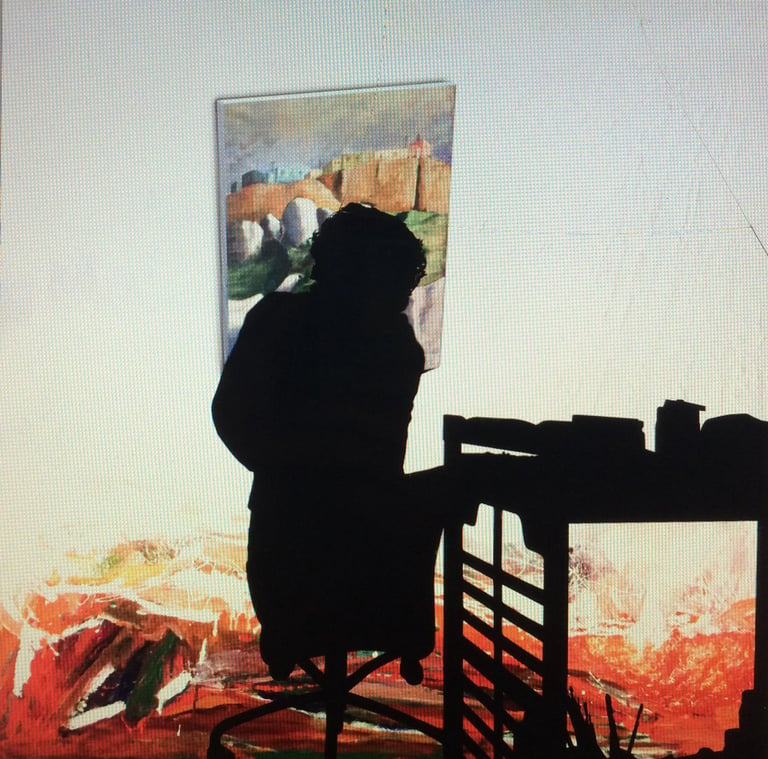

Iraq Burin 1997 - 2017, Acrylic on Canvas - 130 X 130 cm, 2017
(Journey) «رحلة»s2009
Video installation on a loop
For me the city of Jerusalem is a lost city. Despite all my efforts, I was only allowed to visit the city once as a kid. Thus, in my reality Jerusalem is very far away despite its physical proximity, but much closer in my dreams and fantasy

(Waiting / Absence) «انتظار غياب»s2007
Sound installation, two speakers in an empty room
I prepared all i could, I wore the green outfit, I drank the morning coffee and waited. It was an ordinary summer day in which i could not bare the absence any more. It is the estrangement that i have became accustomed to practicing since a long time ago, when my birds left me and my heart became inhabited by emptiness and waiting. From the first moment i arrived in shatana, after my first wolk through the village, i felt that the empty houses were full of love, waiting, and nostalgia for those who had once given it life. This kind of place follows me everywhere. I tried to bring this feeling back into the houses. I collected voices from people around the village through intimate conversations. The good morning, the coffee, welcome, children, games, an elderty man´s memories and his sadness here and there, love, happiness and peace.
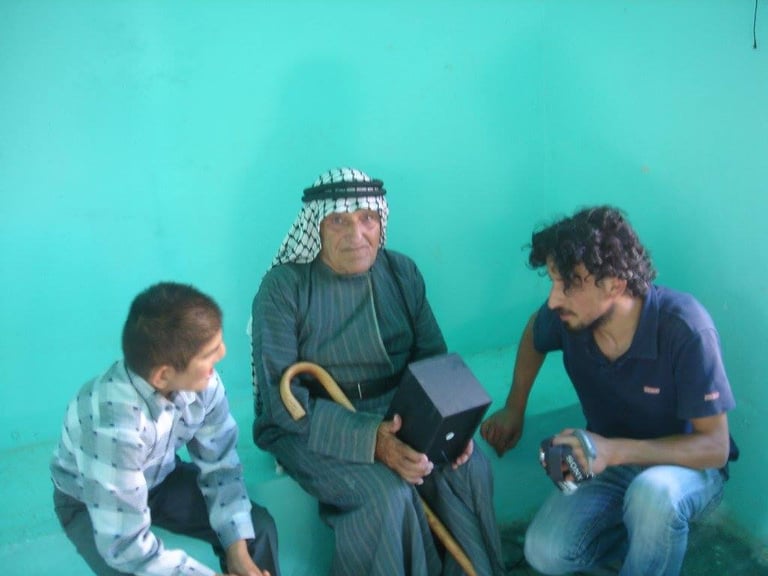


Absence, 2004
Light installation, Five metal boxes hung from the ceiling
By the end of 2004, I took part in a workshop concerning the contemporary arts with the National Academy of Art – Oslo, under the project of the International Academy of Art – Ramallah, participants were chosen according to their C.V’s and previous art works. My project entitled “Absence” focused on humans losing humans or impressing things in their life. I presented this concept by using shadows of humans and other elements, which were absent in my life. We as Palestinians always suffer of this case of “Obligatory Absence” that is made by checkpoints which prevent us from communicating with the other.
In this work, I tried to restore my missing humans and things by drawing their shadow over the walls, this restoration was temporary and imaginary appear through the light and shade.
I carried out this project using a number of disposed metal boxes by reforming these boxes according to my subject, I made cuts on one of the sides shaping a human, I added lights inside to reflect the shadow of the shape over the wall.
I fixed the boxes to the ceiling using fibers in different lengths, distance between the boxes and the wall was different in order to control the size of the shadow, as I already mentioned, these five boxes together in addition to their shapes formed my art work that represents in deed the absent in the life of each one of us.

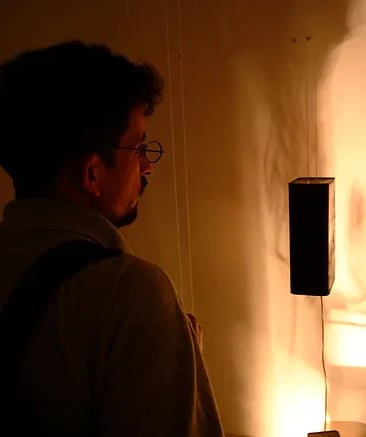
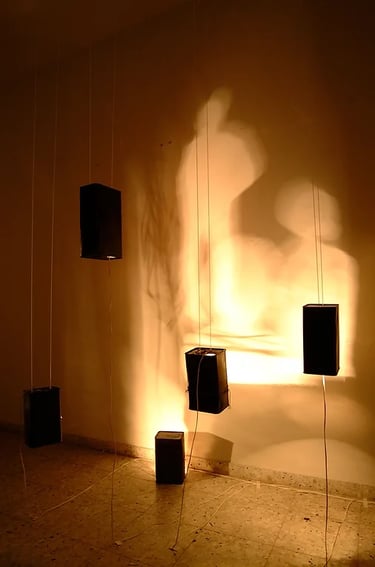



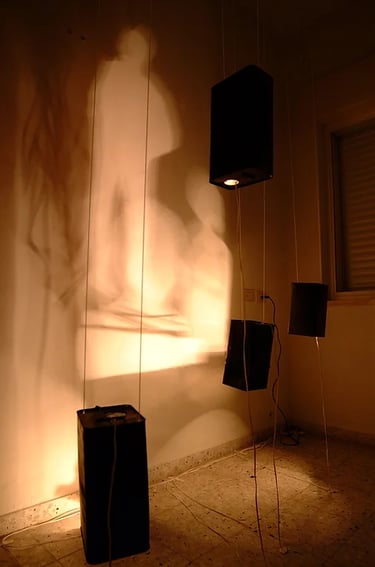

Rafat Asad
+970-59 987 0421
contact@rafatasasd.com
© 2024. All rights reserved.
